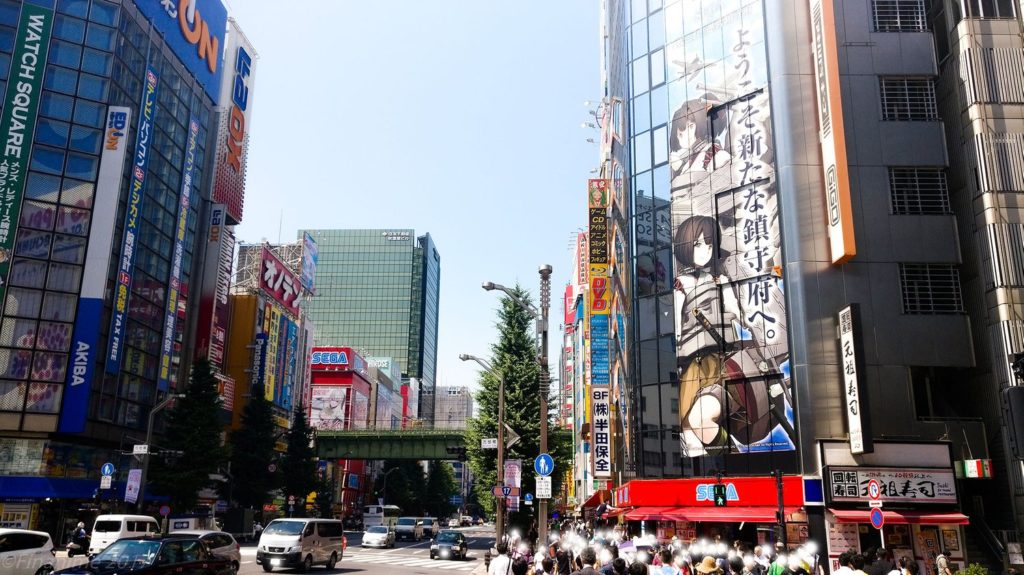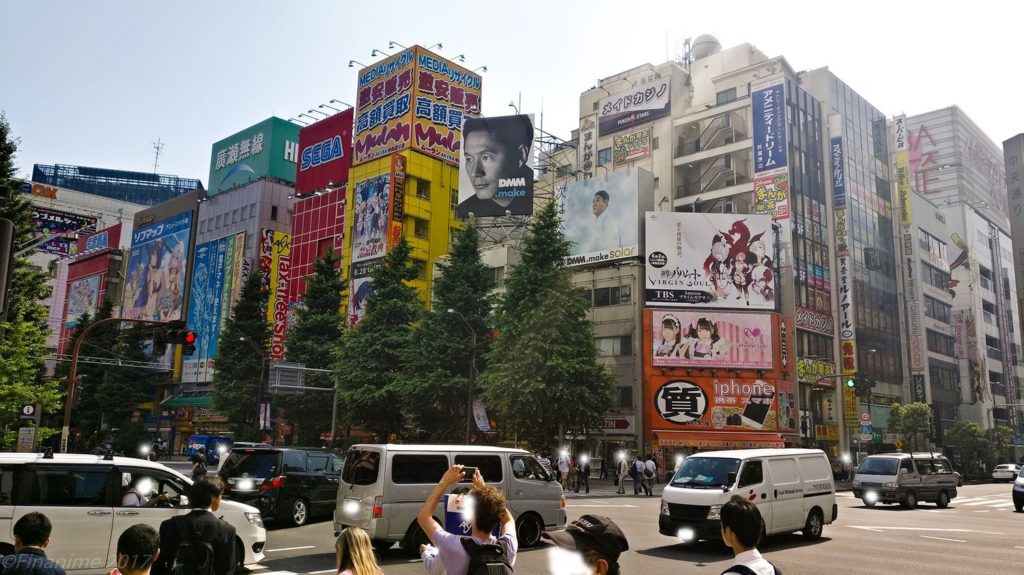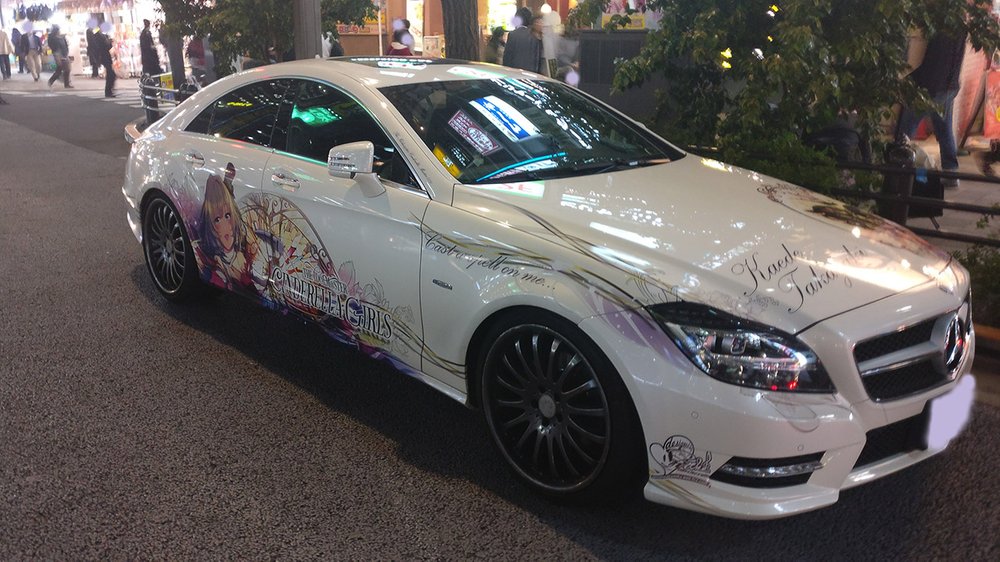AKIHABARA
Tokyo
The legendary Akihabara, or more familiarly Akiba, is the number one travel destination for every otaku in Japan.
Jump straight to store demos here.

Only in recent years has Akihabara grown to what it is now. Less than a decade back, Akiba was even more popular with enthusiasts interested in electronics and technology. In the early 2010s, however, the establishment of business premises and businesses specializing in anime, manga and gaming began in Akihabara, and Akiba became what it is today.

Of course, electronics, components, etc. are still sold in Akihabara, and companies in other industries continue to operate on their premises as before and anywhere else - but the street scene now belongs exclusively to anime and manga. The otaku have sovereignly taken over the area as their own space and good!
Directions
Akiba is not hard to find, it is the easiest way to find trains from Tokyo to Chiba, and the easiest way to get there is by subway or train. The Yamanote line is a ring road through Tokyo, with trains running in both directions every few minutes.
Akihabara (circled in red in the picture) is just a couple of local train stops north of Tokyo Central Station (circled in blue in the picture).

Akihabara “Electric Town”
Once you arrive at Akihabara Station, look for the exit that leads to “Electric Town”. From now on, you should just start heading towards everything that looks interesting! Of course, all the normal local rules of good behavior still apply, but here are a few special considerations when otaku walk in Akiba.
Tourism has found Akiba and there are a lot of foreign tourists shopping in the shops, shaking their heads and even laughing. This, of course, has caused a bit of annoyance among entrepreneurs, vendors, and local enthusiasts. After all, it is not nice for anyone to openly laugh at their own hobby and sometimes, unfortunately, this is rarely reflected in customer service. This, however, will eventually turn out in favor of otaku - most sellers are really excited when it turns out that a foreign customer is familiar with the hobby and shares the same interests! At the same time, it should be mentioned that sellers are often happy to tell you the locations of other good shops if you can't find what you're looking for in that store. So it's worth being active!
Shops do not open immediately in the early morning. Stores, arcades, and other businesses generally open their doors a couple of hours after the peak of the morning, mostly from ten o'clock. The closing time also varies a lot - some of the smaller stores are already closed at six, the bigger ones keep the doors open for customers until ten in the evening. If possible, it is also worth visiting Akihabara in the evening after dark, the numerous advertisements illuminated in the dark are an impressive sight in themselves.
Some companies like remarkably high prices. In particular, some companies located in a prominent position near the train station have noticed that tourists buy a lot of souvenirs, so figures, trading cards and other accessories are sold in the vicinity of the station under a heavy margin. I don’t want to identify any entrepreneurs in a bad light, instead I prefer to specifically mention stores where prices are basically reasonable.
The shops are on several floors, often hidden. This doesn’t mean multi-storey department stores - but when you walk down the street, it’s definitely worth the walker to look up as well! Namely, several great shops can be found hidden in the stairs of the stairwells. However, this does not mean that they would sell anything inappropriate, it is mostly a local way of locating premises in a densely small area. If it seems a bit like that, you should always stop by the stairwell to read the floorboard. The companies located in the building are marked on the board.
The shops are sometimes very cramped, the checkout is queued in good order. Even if there is enough enthusiasm, don’t be overwhelmed - temper is a trump card, give space to others and avoid walking between another customer and the shelf they are watching. You may also notice as you look at a shelf that locals often walk under your eyes - it’s worth reacting to this by thanking and smiling.
Sometimes you get a salesperson to accompany you in the store. In some stores, foreign customers are treated with reservations, and when you walk through the showcases and shelves, you may be followed by a staff member "improving the presentation of the products" on the shelves, etc. You should not be offended or upset by this, but it is a common practice of some companies. Be as if there is no seller - on the other hand, at least I turned this into a good thing - you now have a personal seller at your disposal!! If you need help finding, say, a certain doujin or a collectible card out of a display case, you don't have to look far for help!
Be open-minded and dare to practice! In Akihabara, you could sometimes see foreign otaku clearly restraining their enthusiasm in the stores, and this annoyed me immensely. The threshold to stop separately to admire, pick up to look at or even buy as a souvenir a pleasant wall scroll, figure, shirt, doujin, etc. depicting a favorite character was apparently insurmountably high for some. The same applied to the "UFO-catcher" games and their prizes. If a passing tourist thinks the hobby is special, that is his own business. Keep in mind that if there are any stores in Akihabara, Otaku are in their element, among their own!

Akihabara is also interesting after the shops close their doors - Itasha-taped cars often appear on the streets and locals arrive to spend the evening. Cafés and restaurants are open late, although not as far into the night as in Finland.
